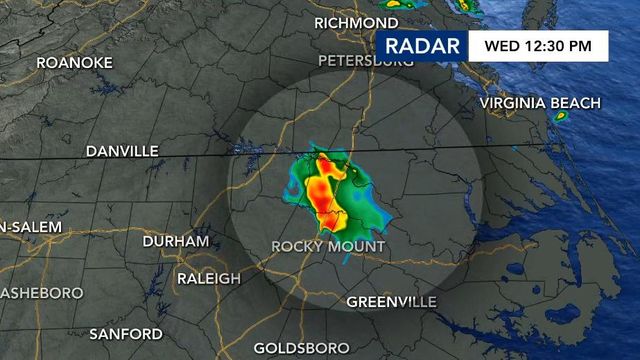EF3 tornado latest part of memorable, active summer for weather in North Carolina
Veteran WRAL meteorologist Elizabeth Gardner explained some of the complexities of forecasting the tornado and how the event went from a ho-hum thunderstorm warning to a historic event for eastern North Carolina.
Posted — UpdatedThe only other EF3 tornado to occur in July in North Carolina was on July 4, 1967, in Gates County, according to WRAL meteorologist Aimee Wilmoth. The National Weather Service confirmed the EF3 tornado had estimated peak winds of 150 mph and was on the ground for about 16.5 miles.
From the forecasting perspective, Wednesday's tornado was difficult to get a read on after the weather system originated in Tennessee and didn't appear to have the structure necessary to make it all the way into eastern North Carolina.
"Essentially, it's an area of spin in the atmosphere that can be very sneaky and add enough turbulence to get a tornadic super cell storm," said WRAL meteorologist Anthony Baglione. "This setup is exactly what we saw [Wednesday], and it looked textbook on radar. They can be very hard to forecast and pinpoint in advance."
Veteran WRAL meteorologist Elizabeth Gardner explained some of the complexities of forecasting the tornado and how the event went from a ho-hum thunderstorm warning to a historic event.
What happened is this one actually started in Tennessee and by the time I came into work Wednesday morning, it was moving into Charlotte and there was no good indication that it was going to hold together past Charlotte. The models were picking up on a cluster that was up in Virginia. Both of the short-range models we look at dissipated the system before it got into our area. We kept watching it, and it was dying out, but it held together just long enough to where we're getting into 10 or 11 o'clock in the morning, getting a little daytime heating, which adds energy to the atmosphere, and then it started to build off that a little bit. When it moved past Raleigh, it moved into an area with a lot of moisture. It really strengthened when it hit that pocket of additional moisture just northeast of Raleigh.
It's part of this whole pattern where we're seeing this energy and this cooler air dropping south in a time of year we don't normally see that. So a lot of things going on in the atmosphere.
We talk about climate change, and everybody thinks about a warming climate. The warming climate is happening. It doesn't just mean that things are going to get hotter, it means that things are going to get hotter and then change in other ways as well. So, climate scientists would point to that flooding in New York and Vermont and something like what's happening here this summer with this really active pattern that doesn't normally happen in the summer, they would attribute that to climate change for sure.
• Credits
Copyright 2024 by Capitol Broadcasting Company. All rights reserved. This material may not be published, broadcast, rewritten or redistributed.






